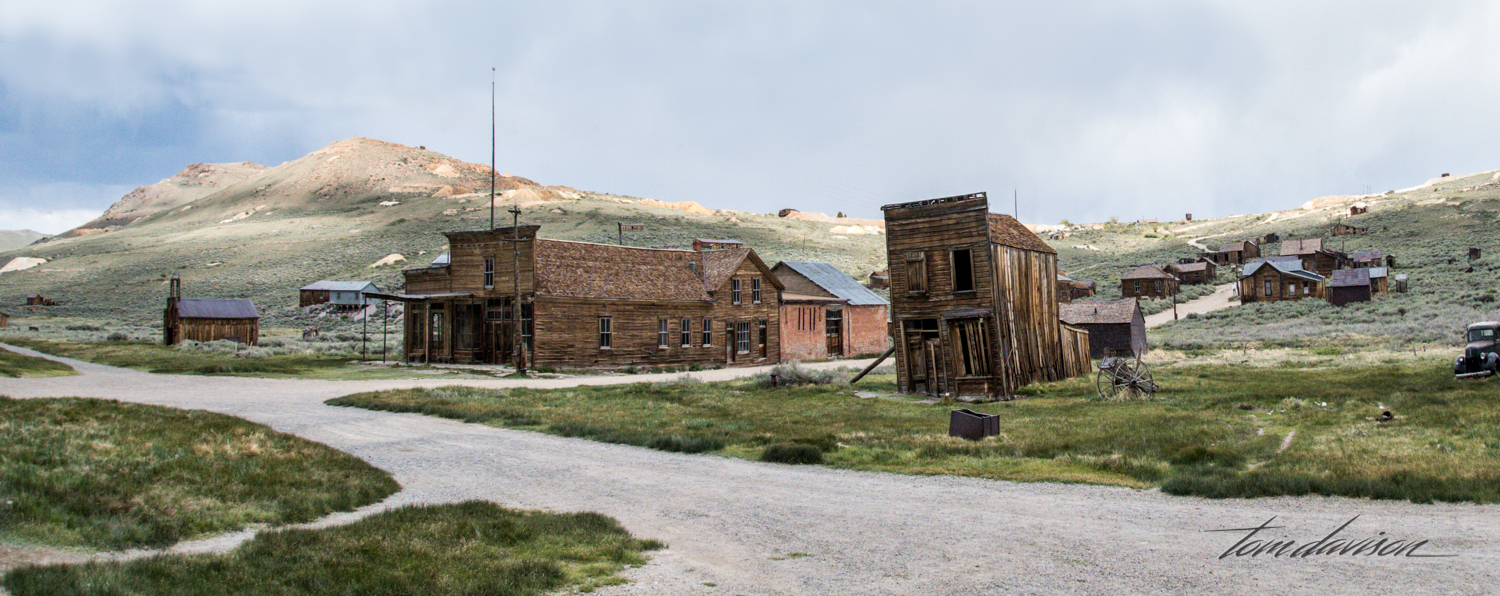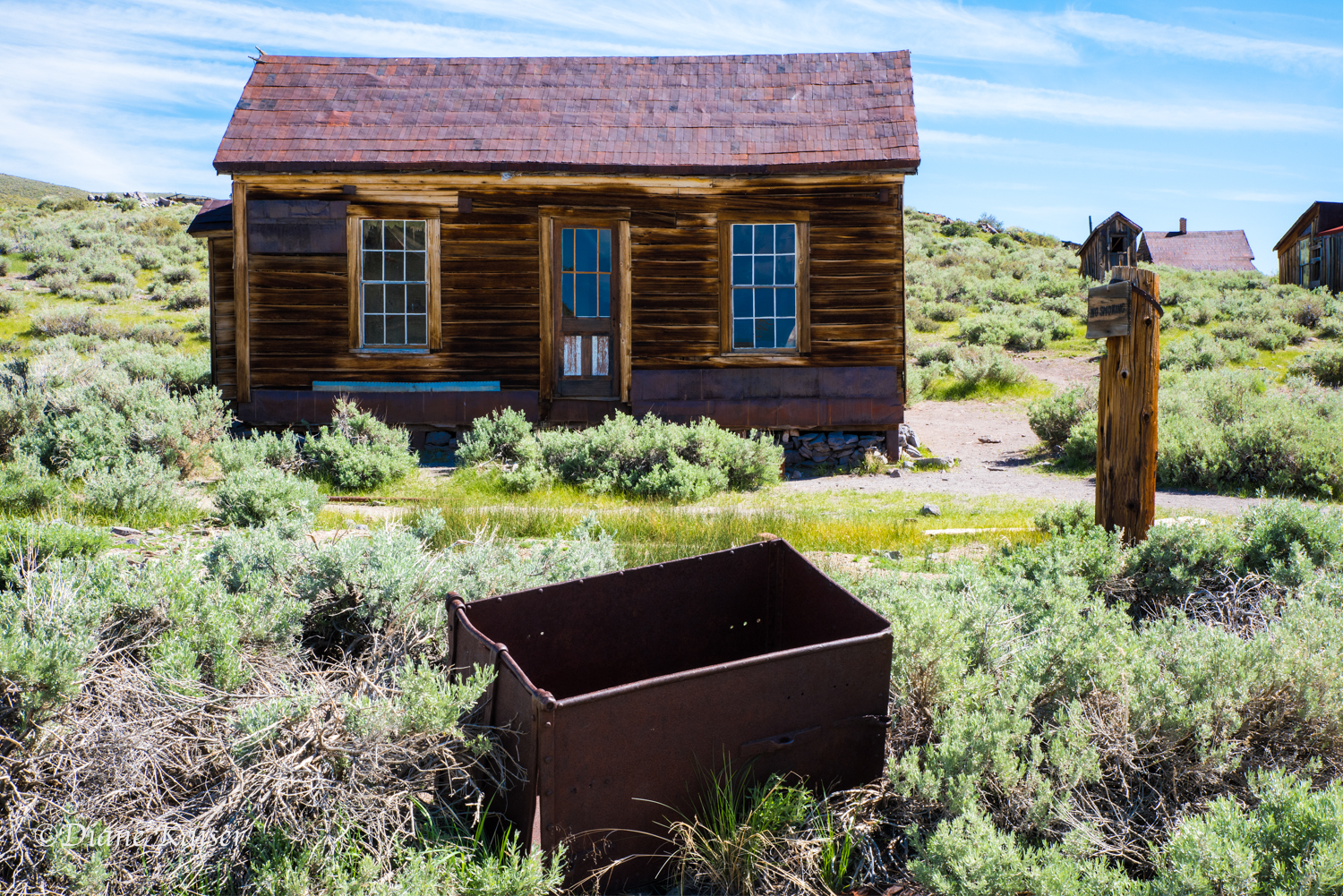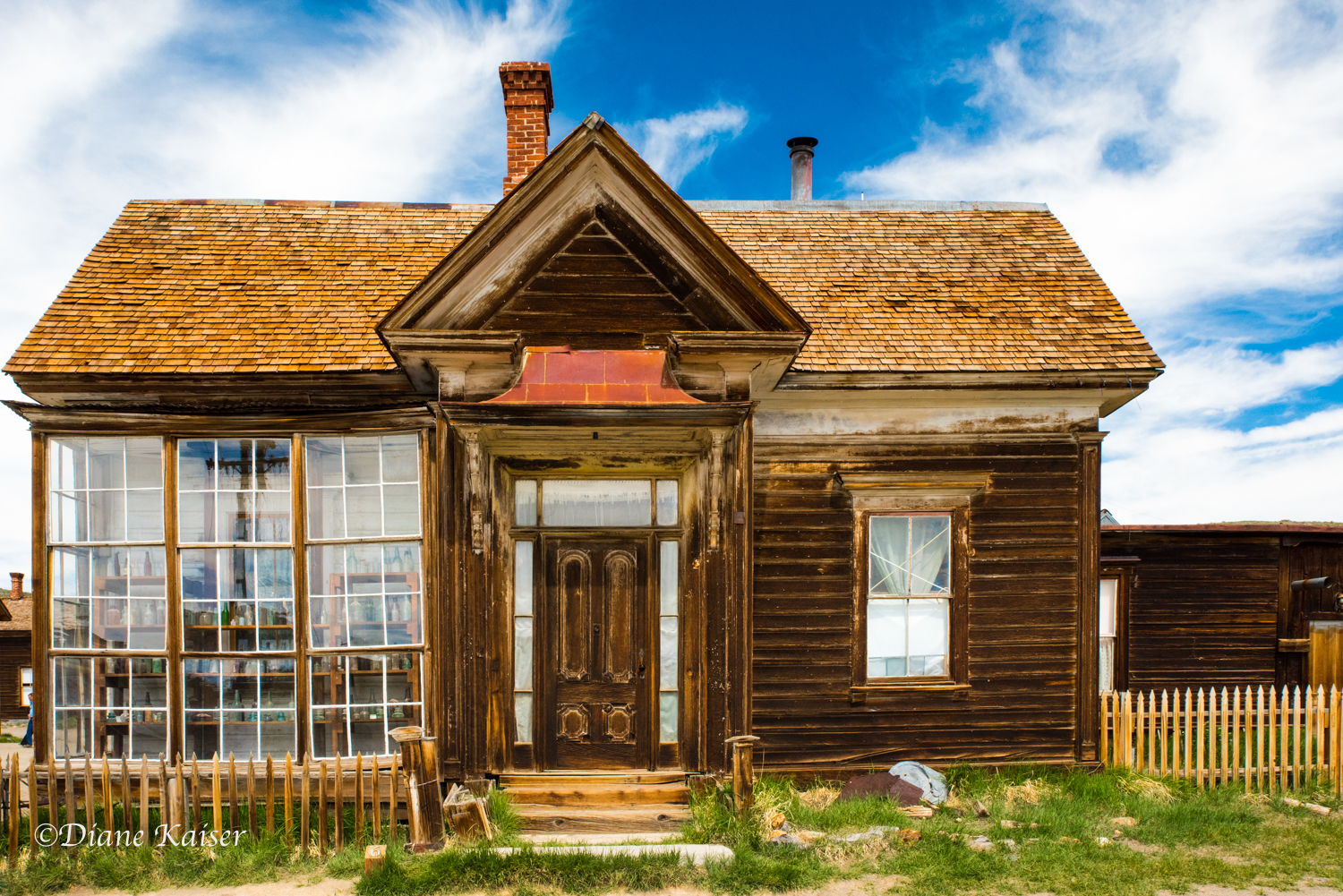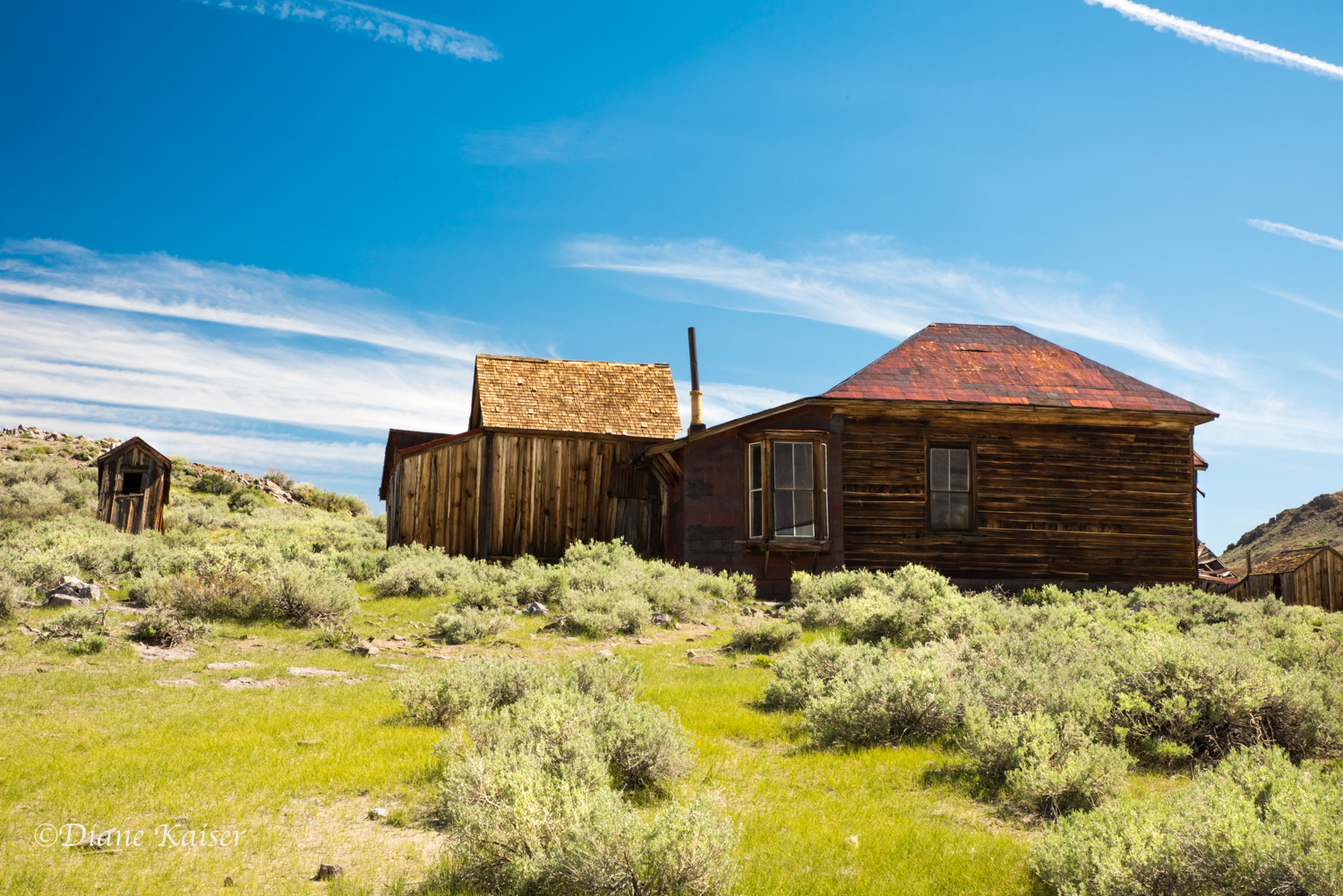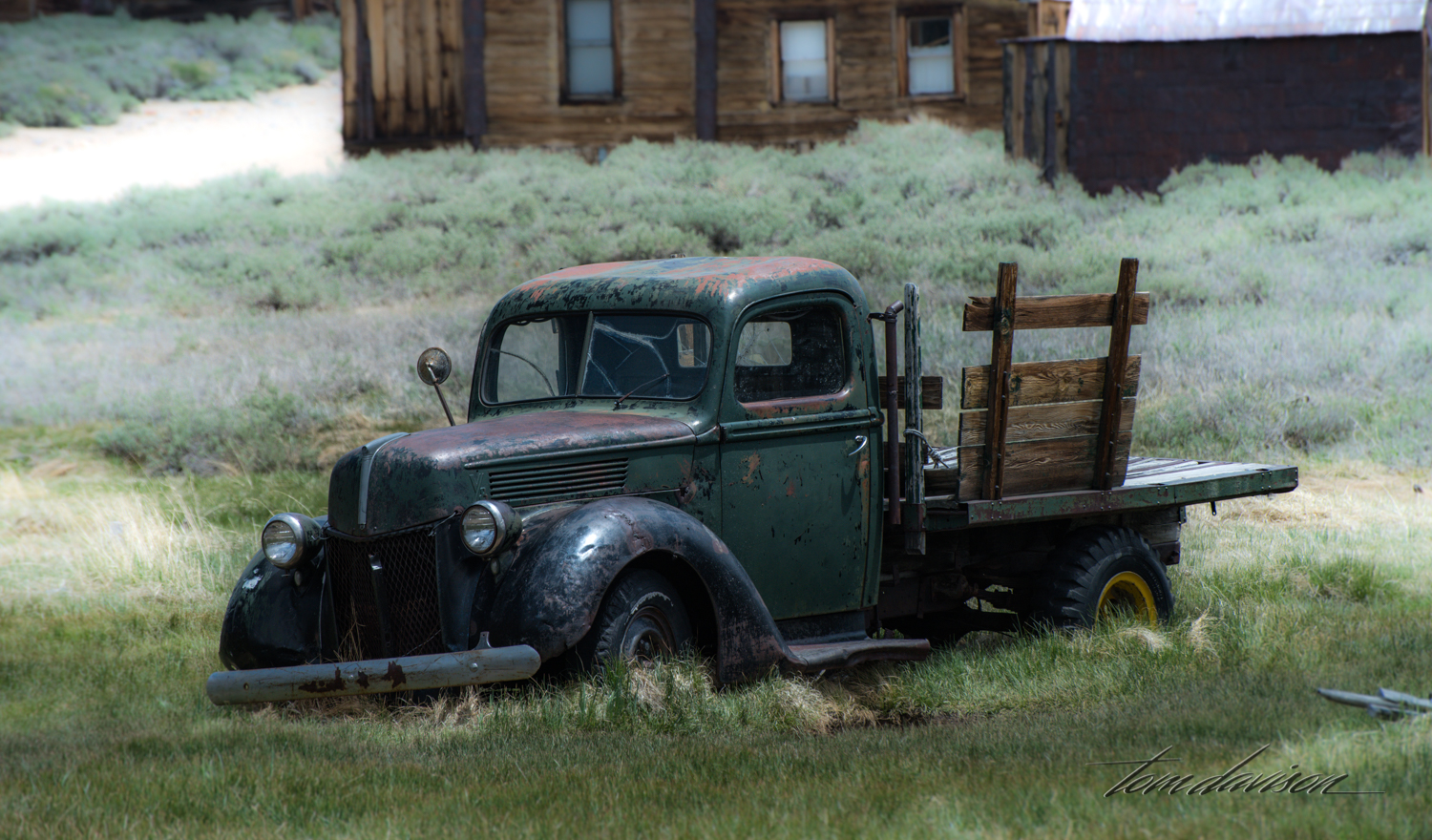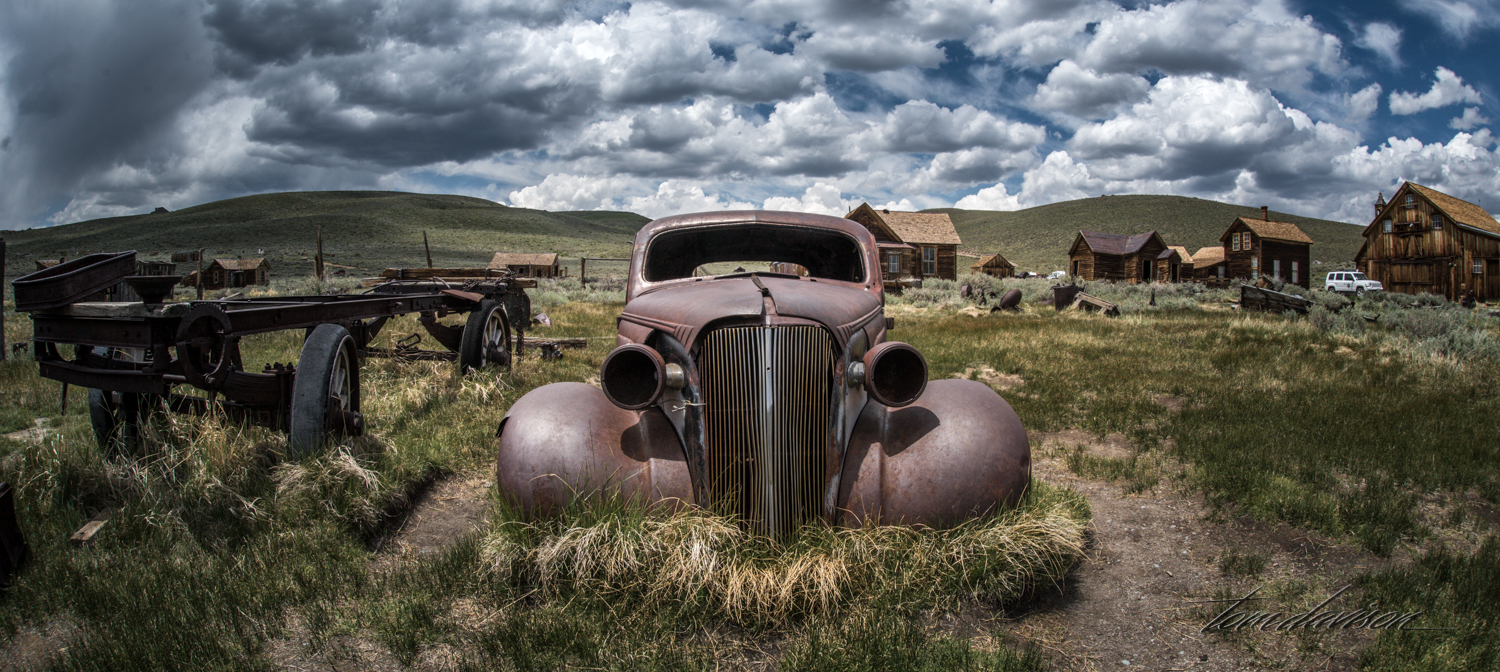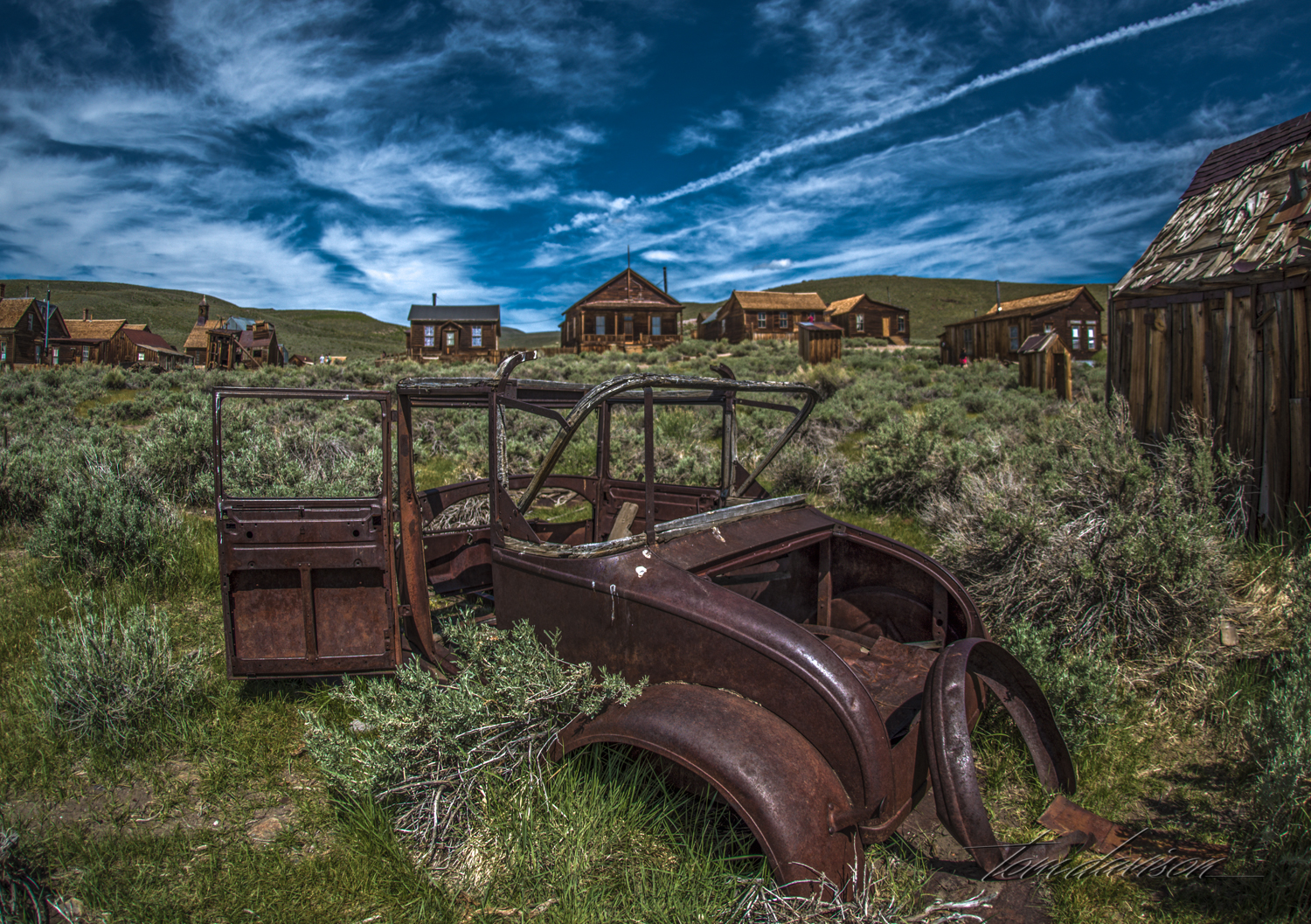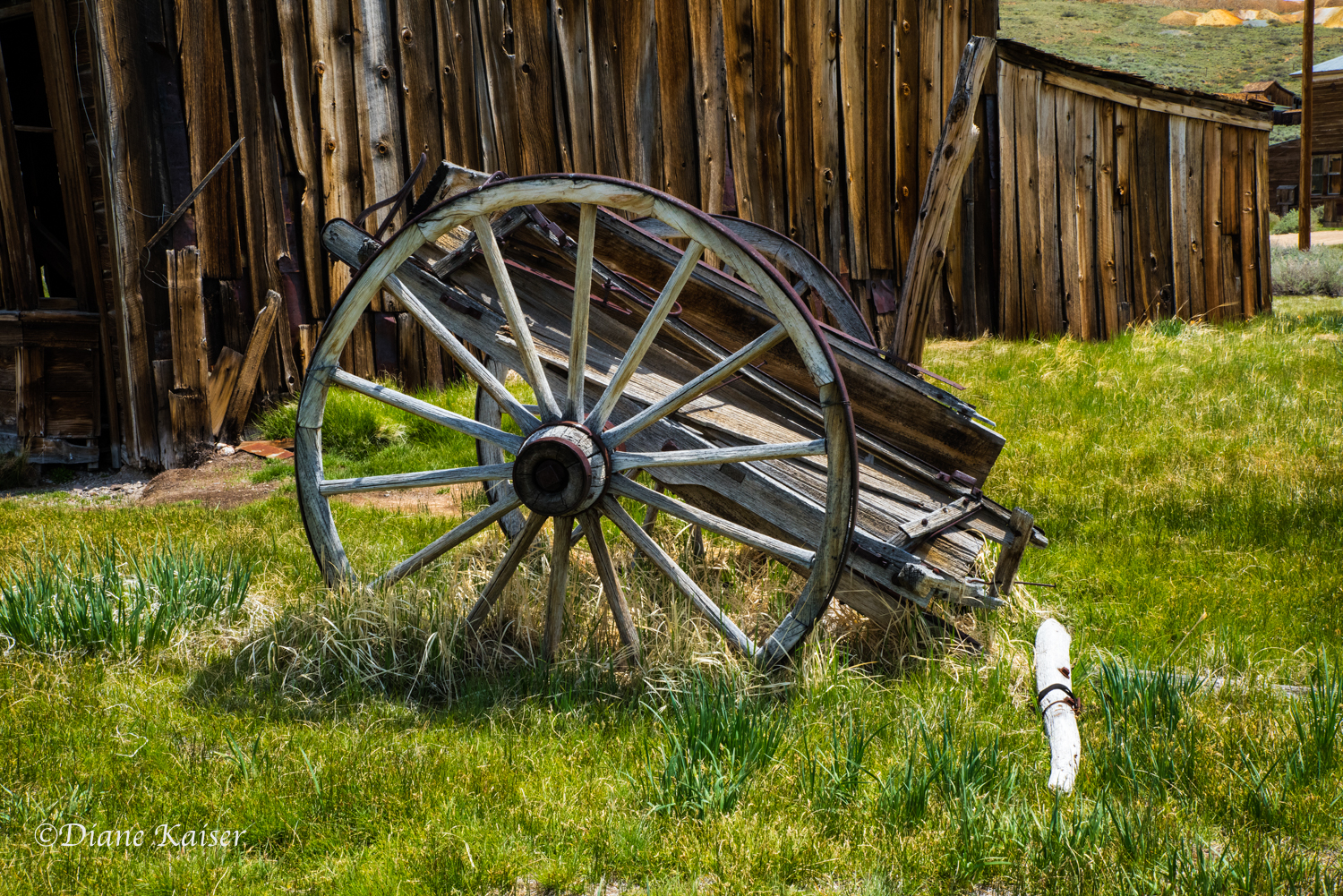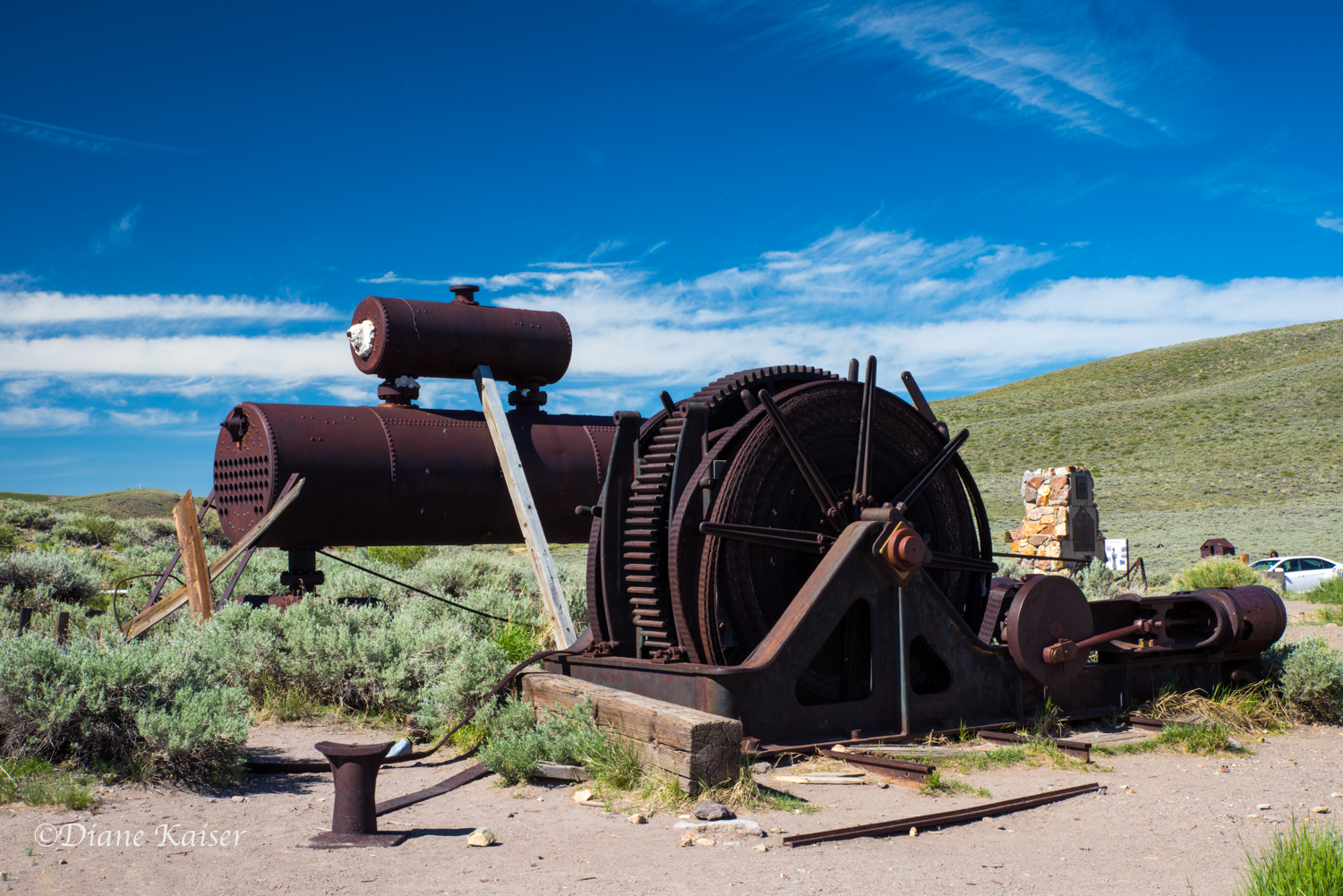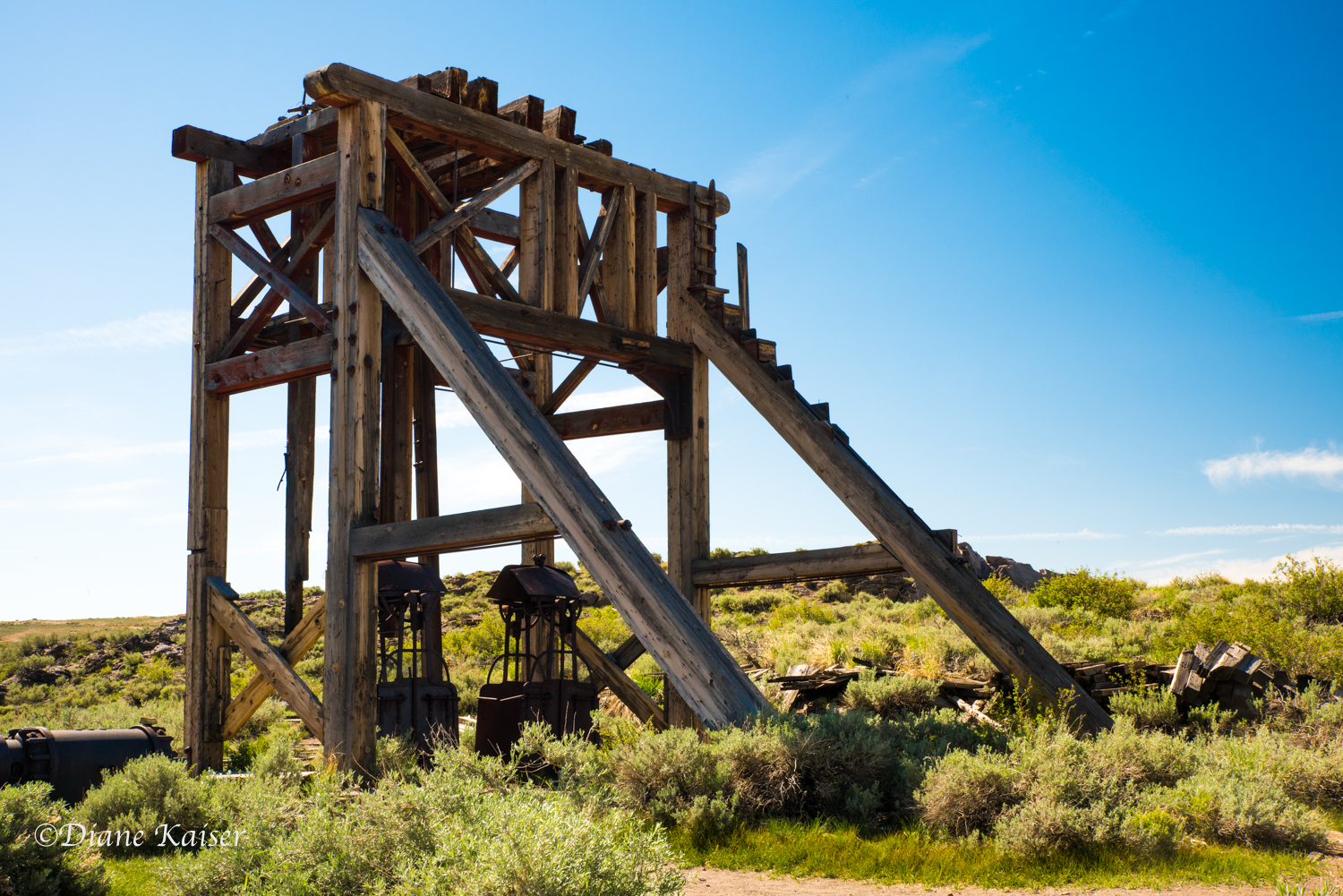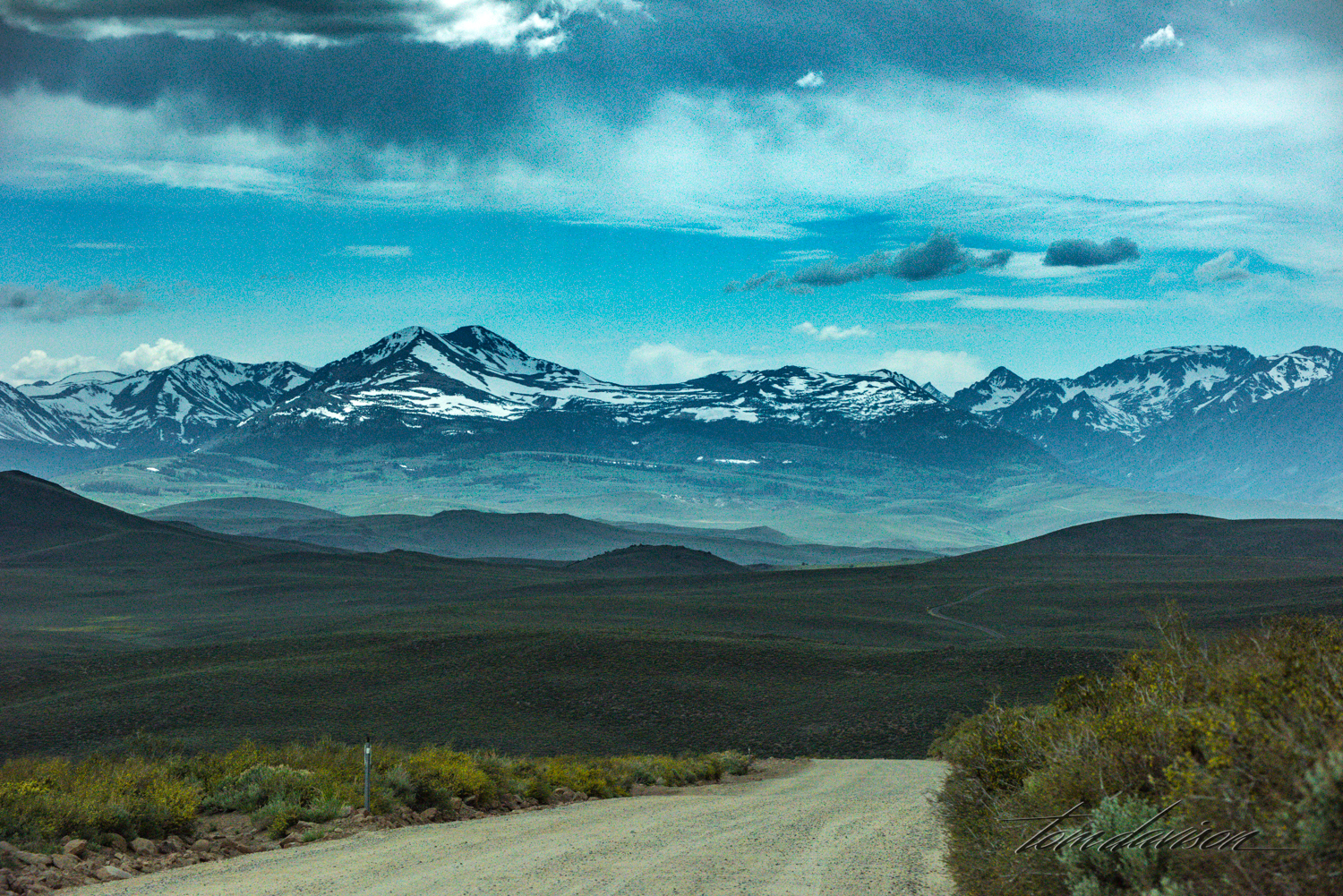For years I have been told, "You gotta go to Bodie." I have now been to Bodie! So have Tom and Diane. Bodie is a ghost town that receives about 200,000 visitors annually. It is an historic state park, established as such in 1962. But, its history goes back much further than that. In 1876 it became a boom town following the discovery of gold and at one time had several thousand residents. Today, Bodie is preserved in a state of arrested decay. There are about 110 structures still in the town including one of many once operational gold mills. For a small fee, visitors can roam the streets, peek into windows and in a couple of homes can even walk into a room or two. Room interiors have remained as they were left, which certainly adds to the description of decay. No attempt has been made to clean them up or even organize them as they might have been used by their residents. There are many resources on the internet that tell more of Bodie's history and I encourage you to check some of them out.
When one drives over the last hill and gets parked there is one structure that can easily be seen from the parking lot. That is the church's steeple.
This structure was once a Methodist Church. A Catholic Church in the town burned down in one of several fires the ravaged this community over the years.
One cannot enter the church. But, you can get a decent photograph by holding your camera such that it pokes it lens through the wired 'fence'.
Tom was nimble and Tom was quick to climb up the hill behind the town to get a different perspective of the whole community. The road in the background is the road you drive into park.
This might be considered the Main Street.
Now it appears that the town is spread out. But, in its heyday there were many more structures between these buildings.
The weather changed quite dramatically as the day passed, with increasing clouds and threats of rain.
Not all buildings are made of wood.
In addition to capturing images of the whole structures, we found many smaller details that gave some insight into the living conditions of the residents. Here, a vine treacle and a tricycle.
There were a number of outhouses dotting the fields. I am assured that one of them was operational.
A brick structure proved to be worthy of some photo-exploration.
We know how Tom is about cars. It turns out the Diane is also interested in old cars and tractors.
A Tom classic style car photograph.
Diane was experimenting with a fish-eye lens. I see a fish-eye lens in her bag in the future!
This hearse was found in the museum located in the central part of Bodie. I was surprised by its elegance. The town's cemetery is up the hill away from town and it would have been a very short ride in an elegant carriage.
As mentioned, the rooms have not been cleaned up or changed since they were abandoned by their residents or business owners. It gives the whole place a very different feel than one might expect from other ghost towns where an effort is made to preserve them as they were when being used.
There is a small museum with displays of some of the items that were used by the town's residents.
There were bird nests under several of the eaves around town.
A visitor and his dog.
In one corner of the town is the abandoned mill.
Left in a helter skelter fashion, there are pieces of mining equipment strewn around the fields.
The last three miles of the road into Bodie is an oftentimes bumpy gravel road. While I focused on making sure I did not drop the car too far into a big hole, Tom focused on the mountains in front of us. He had the better job!
On the way home we stopped at an overlook and below us was the beautiful Mono Lake with its blue-green water. There was still snow on some of the taller mountains. Perfect photographic ending of a very fun-filled day.












